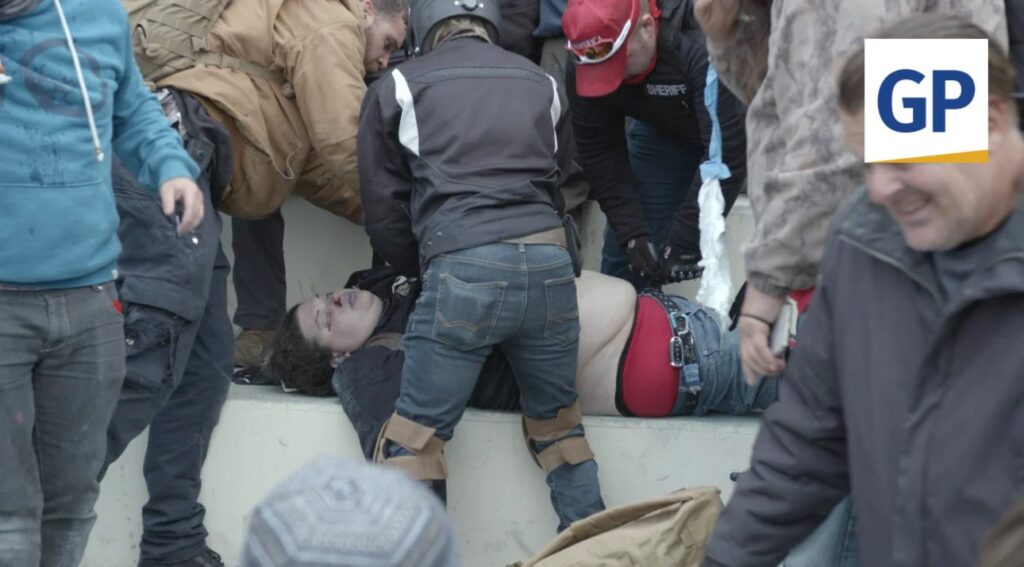Tommy Tatum News recently released a video featuring DC Metro Police Officer Lila Morris taking a break after allegedly beating Rosanne Boyland on the Capitol Steps on January 6, 2021. This shocking incident has brought into question the mainstream media’s portrayal of the events of that day. While it remains uncertain whether Officer Morris’s actions directly led to Boyland’s death, it is evident that the media has largely overlooked critical details regarding her story, as is the case with many other narratives surrounding the Capitol riot. After the incident, Officer Morris received accolades for her actions, including a trip to the Super Bowl, further complicating the public perception of the events that took place.
The Gateway Pundit has surfaced poignant footage from January 6, depicting the aftermath of Rosanne Boyland’s encounter with law enforcement. The video shows her unconscious body on the steps of the Capitol, with distraught Trump supporters desperately attempting to assist her after she had been struck by Officer Morris. The helplessness felt by those around her is palpable, as they begged police for assistance, but were met with continued aggression. The footage reveals Boyland being unceremoniously dragged by the police, raising alarms about the treatment of individuals caught in the chaotic melee of the Capitol riot.
Eyewitness accounts and available video footage suggest that the police’s aggressive tactics and the subsequent crush of people led to Boyland’s purported death. Aggressive crowd control measures, including the use of pepper spray and tear gas, were employed to manage the protestors, which only exacerbated the situation. At one point, individuals were forced into a dangerous pile as officers fired rounds of tear gas indiscriminately. Eyewitnesses recall Boyland lying motionless as police continued to use violent measures against those trying to help her, intensifying the distress of onlookers eager to administer aid.
In the newly released video, one can witness the frantic efforts made by those attempting to revive Rosanne Boyland. They used items from a CPR kit in a desperate bid to restore her consciousness, all while pleading with police for assistance that never came. The video juxtaposes their acts of humanity against the backdrop of police aggression and inaction, illustrating a heartbreaking scene where life was lost amidst chaos. This imagery shines a light on the suffering felt by those in the crowd, who were branded as violent protestors yet were merely responding to the tragedy unfolding before them.
The narrative surrounding January 6 has been heavily scrutinized, with many claiming that the events have been manipulated to paint protestors as unreasonably violent towards law enforcement. Boyland’s tragic fate has largely been ignored in discussions about the day’s violence; however, her death serves as a catalyst for understanding the reactions of the crowd. A witness described the crowd’s collective response as instinctual, highlighting how one individual’s suffering can incite a wide-scale emotional response among a group, leading to widespread outrage against authorities perceived as responsible.
As detailed accounts continue to emerge about Boyland’s demise and the aftermath, many of those who rushed to her aid now find themselves entangled in legal battles, facing charges for their actions during the protest. The irony is stark: individuals who sought to help a dying woman are now labeled as criminals. Advocates argue that the responsibility for Boyland’s death lies at the feet of law enforcement, accusing them of reckless behavior that endangered the lives of many on that day. As the two-year anniversary of these events approaches, there is a growing push to spotlight Rosanne Boyland’s story, combatting attempts by the government and mainstream media to erase her from history.

